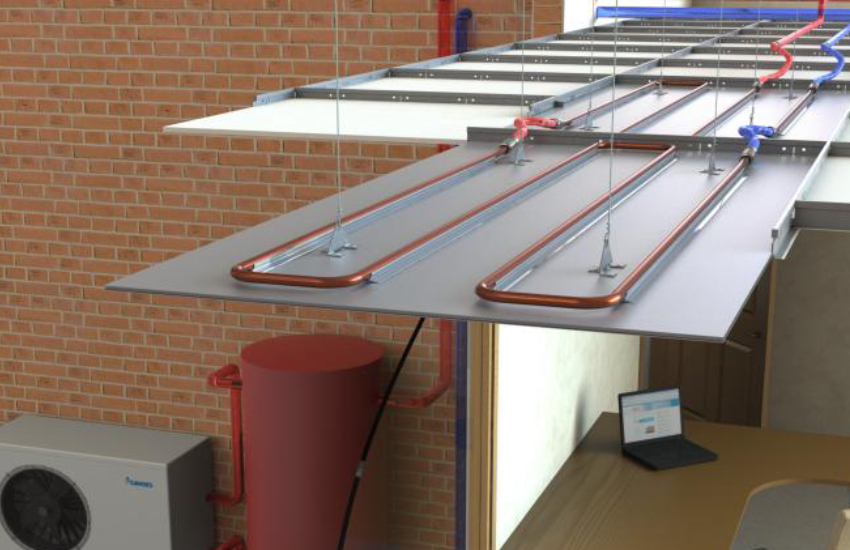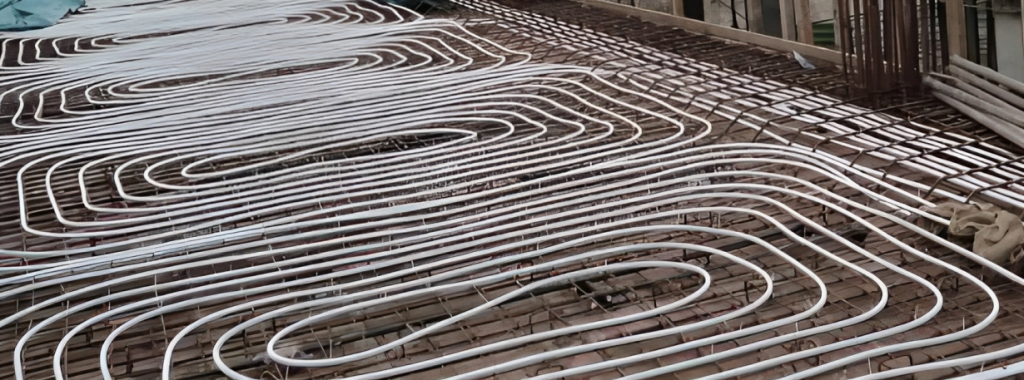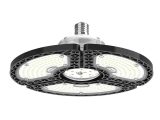
Lowering The Temperature Indoors With Radiant Cooling
June 6, 2023We all know the feeling of a too-warm home, particularly during hot summer days. Climbing into your bed with sweat-soaked sheets is far from pleasant, and it’s also uncomfortable to gather in the living room and try to relax. Radiant coolings is one solution, as continued advancements in the building science field and improved energy-efficient technologies make this technique increasingly popular and accessible to homeowners tired of the high costs and poor energy efficiency of traditional conditioning systems. Here, we explore what radiant cooling is, the key considerations when choosing the right system, and the advantages associated with investing in these systems.
What Is Radiant Cooling And How Can It Help Your Home?
Radiant cooling india is a method of cooling a home without the need for traditional air conditioning. It works by manipulating radiation from the sun in order to absorb heat from the environment. Radiant cooling systems usually involve a type of hydronic installation that uses hot water, a cold sink, and pipes to disperse cool air throughout the home. Another form of radiant cooling works by using the refrigeration process, with pipes running through the walls and floors to draw out indoor heat and move it to the outdoors. As a result of this process, the home will remain significantly cooler, reducing the need for AC and other cooling methods.

Types Of Radiant Cooling Systems: Exploring Your Options
- Hydronic/Water-Based Radiant Cooling Systems: This type of cooling system uses circulating hot water as the primary source of coolings. The water is circulated through a network of tubing or pipes embedded in the floors, ceilings, or walls of the building, transferring heat to the interior of the building. The system relies on a complex set of pumps, chilling systems, and temperature controllers to ensure that the optimal amount of cooling is achieved.
- Air Vapor Cooling Systems: This type of radiant cooling system uses a network of blowers and fans to blow cold air through the building, picking up heat from air-based building components such as walls, floors, and windows. This air vapor system is fast-acting and used in applications such as office buildings, where a fast response time is important.
- Electric Radiant Heating Systems: This type of system uses unobtrusive electric cables to transfer heat from a boiler or furnace, and transfer it directly to the building materials where it is absorbed. The energy-efficient system can be used in residential and commercial applications to provide evenly-distributed, consistent heating and cooling.
- Solar/Geothermal Radiant Cooling Systems: These are one of the most energy-efficient cooling systems available. This system uses solar-thermal energy to absorb and transfer heat through a network of air ducts and radiant loops. In addition to cooling inside the home, a solar thermal system can also be used to pre-heat a building’s hot water.
Why Are Radiant Cooling Systems Worth The Investment?
Radiant cooling systems come with many important benefits, both for the homeowner and the environment. For one, they’re significantly more energy-efficient than traditional HVAC systems, meaning they’ll save you a good amount of money in the long run. They also provide optimal cooling comfort as they help to eliminate hot and cold spots, minimize noise, and create a more natural atmosphere with a lower humidity level. Finally, the systems require minimal maintenance and can be easily installed in existing homes without disrupting the structure.
Characteristics Of High-Quality Radiant Cooling
When selecting a radiant cooling system for your home, you should also make sure the system comes with the necessary features to ensure optimal performance. This includes a built-in sensor that can detect indoor and outdoor temperatures in order to control the cooling cycles, a humidity sensor to maintain ideal levels, and a programmable thermostat to allow you to customize your settings. Some systems also come with the added benefit of energy-saving modes that will automatically switch off the system when it’s not in use.
How Radiant Cooling Systems Optimize Home Efficiency?
Radiant cooling systems are also a great way to achieve energy efficiency in your home. For one, they don’t require the use of fossil fuels, reducing reliance on energy sources that can cause pollution. Additionally, the systems can significantly reduce your energy consumption by up to 50%, which can add up to big savings in the long run. Lastly, radiant coolings system minimize your home’s carbon footprint by reducing its total energy usage.
Maintenance Tips For Radiant Cooling Systems
To ensure your radiant cooling system continues to run efficiently and effectively, it’s important to keep up with regular maintenance. This includes inspecting the system for leaks and cracks and making sure all connections are secure. Additionally, you should check the system’s coolants and make sure all the pumps are running properly. Regular maintenance will also help to prolong the life of your system and ensure optimal performance.
Conclusion
Overall, radiant cooling is a great way to lower the temperature indoors without sacrificing energy efficiency or comfort. When selecting the best system for your home, it’s important to consider the type, size, efficiency rating and added features. Homeowners can look forward to energy savings, comfort, and minimal maintenance when investing in high-quality radiant coolings. With these considerations, making the switch to radiant cooling will help you save money and keep your home cool while maintaining a healthy, energy-efficient environment.

Gilberto Hoover is a California-based technology expert and blogger. He has been in the tech world since the early 2000s and has a passion for helping others to stay up-to-date on the latest industry trends. Gilberto has experience with a range of platforms, languages, and tools and enjoys helping others solve and overcome the everyday tech-related challenges.


